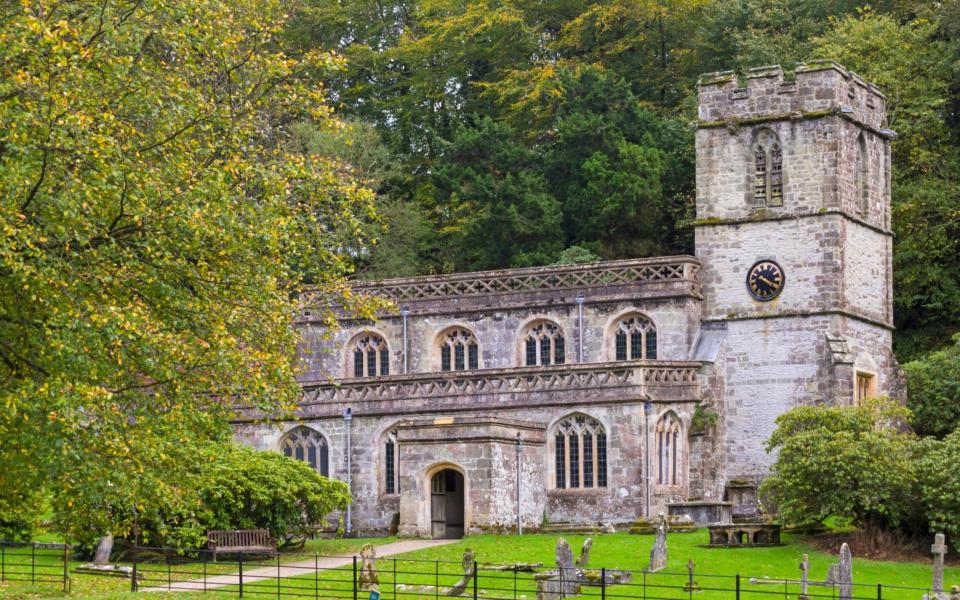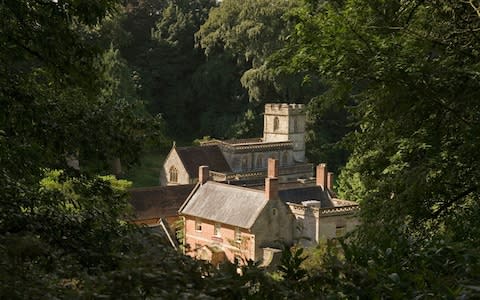Churches at mercy of lead thieves because of rules around modern roofs

Churches are being left at mercy of lead thieves because of rules which prevent parishioners using modern materials to replace stolen roofs, it has been warned.
A Grade I listed church in the diocese of Salisbury had its roof stripped for the second time after planning rules meant the warden was banned from using composite materials instead of lead after the first theft.
It took St Peter’s in Stourton four years to raise £160,000 to replace the stolen metal and repair the water damage that had occurred in the meantime and work was only completed last year.
The latest crime comes as the rising price of metal has seen thefts from church roofs increase by a third over the past two years, with incidents now averaging 37 a month.
St Peter's is not the first church to have found itself at the mercy of repeated thefts and the situation has led to calls for planning officials both within the church and local councils to be "realistic".
Cristina Fearon, who has been the church warden at St Peter’s for more than a decade, said that the insistence that lead is replaced like-for-like is “putting churches at risk”.
She said that alongside the risk of repeated theft it took years to raise enough money to cover the huge expense of replacement and in the mean time damage was being done to the buildings.
“There has to be a bit of realism about this”, Mrs Fearon said.
The restrictions on what can be used to replace stolen roofs are particularly onerous on listed churches, of which there are more than 13,000 across the UK.

St Peter's church, which dates from 1290, is a Grade I listed building and has a number of listed memorials from the Hoare banking family, which bought the estate in the 1700s.
Mrs Fearon said that she understood the concerns about preserving the character of churches, but with some modern materials the differences “you can’t tell the difference”.
"I wish that the diocesan advisory committees would put all of their energy into choosing a material that would be good as a replacement," she said.
Any changes to churches have to be approved by the local Diocesan Advisory Committee (DAC) and if they are listed the local council planning department.
The Church Building Council describes lead as the “the most appropriate” roofing material and warns that there will a “stronger presumption” that the “historic appearance” will be maintained if the building is listed. They name a range of alternative materials including steel, zinc, copper and aluminium which can be used.
In 2017, Historic England published guidance advising that “like-for-like is highly desirable” when a roof is stolen and stated that changing the material could “detract enormously from a building’s significance”.
The guidance says that they will “not support the use of synthetic non-metal materials” except in “highly exceptional circumstances”.
Historic England advises on works is often represented at the ecclesiastical court if the original decision of the DAC is opposed.
Mrs Fearon said that after the original theft in 2012 she “begged” to use a much cheaper modern composite material for the roof but had been told that it had to be lead.
As the building started to deteriorate and water was seen running down the memorials the parishioners learnt that the only way that they could overturn the decision was to hire a barrister and fight it in the ecclesiastical courts.
Instead of wasting more time and costs they backed down and focused on raising the money a to replace the roof, which was installed with state of the art burglar alarms. Locals even spent nights in their cars watching for potential thieves.
Then, on Friday, the parishioner who opens the church every day went in to find the pews flooded and realised they been targeted again. The alarm had been disabled.
“It is not just the cost of the lead,” Mrs Fearon said. “It is very distressing for the parishioners and it really does impact the whole community.”
It is unclear whether the church will have to cancel the six weddings booked in coming weeks as it again faces having to raise thousands for repairs.
It is not the first church to come up against the DAC, though with decisions made within the local diocese it is said they vary across the country.
Becky Clark, Secretary of the Church Buildings Council, said that "there is absolutely no presumption that lead must always be replaced with lead" and their guidance sets out a number of alternative metals which can be used.
“Lead theft is a persistent problem for churches and the Church of England has been in the forefront of efforts to combat it including working with the police to secure a change in the law to impose tougher sentences for thieves," she said.
The theft problem, which was thought to be in decline after new rules on scrap metal sales, looks likely to increase.
In its latest strategic assessment of serious crime the National Crime Agency has warned that after a decade of decline rising demand has “made metal theft one of the fastest growing crimes globally”
They add that offenders “show a growing propensity for violence if confronted”.
